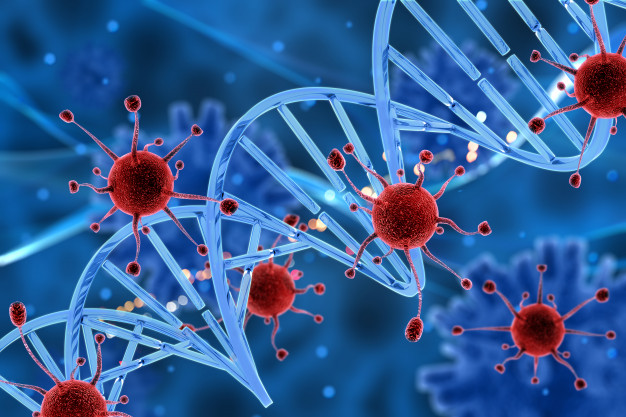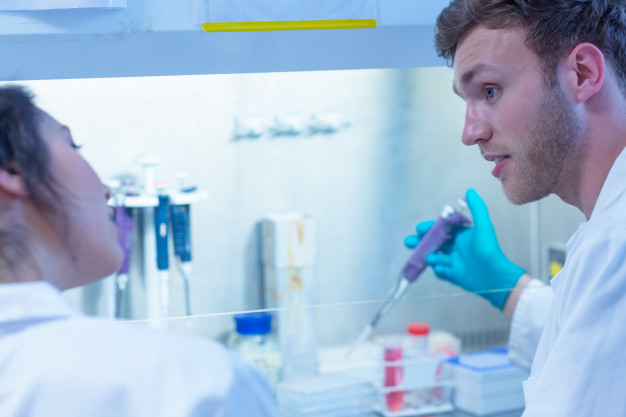
06 Jun Precision Medicine: An Achievable Promise for Breast Cancer Treatment Today
What is Precision Medicine?
Precision medicine does not mean tailoring a specific medical treatment or creating a new drug to a specific patient with a specific disease. It is rather a type of approach that allows scientists to create and doctors to give drugs and treatments that could target the patients based on their population or subpopulation (National Cancer Institute, 2017). This can be derived using a large-scale data of the patients’ lifestyle, clinical, genetic and biomarker information to stratify the medical treatments for patients (Koenig, et al., 2017). In other words, it is about targeting the right drugs to the right patient.
What is Breast Cancer?
Breast cancer is the most common malignancy affecting women not only in Spain but also worldwide (Baeyens-Fernandez, et al., 2018). Both older and younger women have a chance of getting breast cancer but statistically, majority of women aged over 50 are diagnosed with breast cancer (NHS, 2016). Breast cancer occurs in the ducts that carry the milk to the nipple (American Cancer Society, 2018). It starts when breast cells divide and grow uncontrollably (NHS, 2016). Majority of breast cancers are estrogen receptor (ER)-positive breast cancer and it is the oestrogen that elevates the growth of these breast cancers (Bray, et al., 2018). ER-positive breast cancer is much more common in menopausal women (Coughlin and Ekuwueme, 2009).

Breast Cancer Incidence and Mortality Rate in Spain
Since the 1970s, the breast cancer incidence in Spain has increased sharply despite the incidence rate is the lowest among the other European countries (Pollan, et al., 2018). According to a study, from 1985 to 2012, Spanish women aged less than 40 years had higher incidence than women ages 40 years or older (Baeyens-Fernandez, et al., 2018). However, the mortality rate of breast cancer in Spain is also the lowest in Europe according to the latest research by Cancer Research UK (The Olive Press, 2014). Spain is reported to have 11% mortality rate compared to the UK which has the highest rate of 16% (Malvezzi, et al., 2017). There is different mortality rate between different age groups among women in Spain as younger and middle-aged women showed decreasing trend while older women remain constant (Álvaro-Meca, et al., 2012).
Success and Potential of Precision Medicine
The appealing concept of precision medicine is very promising to healthcare and leads to increasing interests of the public. There have been successful cases of precision medicine treatment in breast cancer, but they haven’t been many due to major challenges in driver mutational events (Kandoth, et al., 2013) and lack of identifying every single gene driver in breast cancer (Stephens, et al., 2012). Hence, the solution to this issue is to develop a bioinformatic tools to identify driver mutations in the near future (Arnedos, et al., 2015).
Despite challenges and limitations, there are plenty of directions and measures that can be taken to further the success of this. For instance, increasing the accessibility and availability of essential data, promoting usage of genomic information in health care and developing new disease classifications (Dzau and Ginsburg, 2016). These would create a more enhanced model of precision medicine and gain a much wider trust from the public.

In a nutshell, precision medicine is the future not just for breast cancer but also for the entire healthcare. It has come so far in making transformative possibilities even in advanced cancer treatment. With little by little effort to collect and access to more genetic data of all the population and identifying and comprehending all cancer gene drivers, there is no doubt that precision medicine will become the ultimate beacon of hope in treating breast cancer.
Solmeglas has always been working very closely with their partners and research centres, and also facilitate all their needs in order to make the advancement in precision medicine happen. All the products supplied by Solmeglas have widely benefit the research centres in carrying out research experiments especially in identifying as many cancer genes as possible. As Solmeglas also aims to produce and supply much more advanced biotechnology products to their customers, there is no doubt that in the near future, the effort in precision medicine will become more successful.
References
Alvaro-Meca, A., Debón, A., Prieto, R.G. and de Miguel, Á.G., 2012. Breast cancer mortality in Spain: Has it really declined for all age groups?. Public Health, 126(10), pp.891-895.
American Cancer Society, 2018. About Breast Cancer. [pdf] Available at: https://www.cancer.org/content/dam/CRC/PDF/Public/8577.00.pdf.
Arnedos, M., Vicier, C., Loi, S., Lefebvre, C., Michiels, S., Bonnefoi, H. and Andre, F., 2015. Precision medicine for metastatic breast cancer—limitations and solutions. Nature Reviews Clinical Oncology, 12(12), p.693.
Baeyens-Fernández, J.A., Molina-Portillo, E., Pollán, M., Rodríguez-Barranco, M., Del Moral, R., Arribas-Mir, L., Ramírez, E.S.C. and Sánchez, M.J., 2018. Trends in incidence, mortality and survival in women with breast cancer from 1985 to 2012 in Granada, Spain: a population-based study. BMC cancer, 18(1), p.781.
Bray, F., Ferlay, J., Soerjomataram, I., Siegel, R.L., Torre, L.A. and Jemal, A., 2018. Global cancer statistics 2018: GLOBOCAN estimates of incidence and mortality worldwide for 36 cancers in 185 countries. CA: a cancer journal for clinicians, 68(6), pp.394-424.
Coughlin, S.S. and Ekwueme, D.U., 2009. Breast cancer as a global health concern. Cancer epidemiology, 33(5), pp.315-318.
Dzau, V.J. and Ginsburg, G.S., 2016. Realizing the full potential of precision medicine in health and health care. Jama, 316(16), pp.1659-1660.
Kandoth, C., McLellan, M.D., Vandin, F., Ye, K., Niu, B., Lu, C., Xie, M., Zhang, Q., McMichael, J.F., Wyczalkowski, M.A. and Leiserson, M.D., 2013. Mutational landscape and significance across 12 major cancer types. Nature, 502(7471), p.333.
Koenig, I.R., Fuchs, O., Hansen, G., von Mutius, E. and Kopp, M.V., 2017. What is precision medicine?. European respiratory journal, 50(4), p.1700391.
Malvezzi, M., Carioli, G., Bertuccio, P., Boffetta, P., Levi, F., La Vecchia, C. and Negri, E., 2017. European cancer mortality predictions for the year 2017, with focus on lung cancer. Annals of Oncology, 28(5), pp.1117-1123.
National Cancer Institute, 2017. Precision Medicine in Cancer Treatment. [online] Available at: https://www.cancer.gov/about-cancer/treatment/types/precision-medicine
NHS, 2016. Breast Cancer. [online] Available at: https://www.nhs.uk/conditions/breast-cancer/
Pollán, M., Michelena, M.J., Ardanaz, E., Izquierdo, A., Sánchez-Pérez, M.J., Torrella, A. and Breast Cancer Working Group, 2010. Breast cancer incidence in Spain before, during and after the implementation of screening programmes. Annals of oncology, 21(suppl_3), pp.iii97-iii102.
Stephens, P.J., Tarpey, P.S., Davies, H., Van Loo, P., Greenman, C., Wedge, D.C., Nik-Zainal, S., Martin, S., Varela, I., Bignell, G.R. and Yates, L.R., 2012. The landscape of cancer genes and mutational processes in breast cancer. Nature, 486(7403), p.400.
The Olive Press, 2014. Spain has Europe’s lowest breast cancer mortality rate. [online] Available at: https://www.theolivepress.es/spain-news/2014/04/05/spain-has-europes-lowest-breast-cancer-mortality-rate/


Sorry, the comment form is closed at this time.